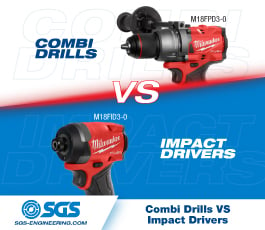Power a Soundsystem Using a Generator
Here in Britain, we have a huge and diverse tapestry of music festivals and outdoor events all over the land, every summer. Whether it's a few of your mates bands at a village fete, or a not so legal gathering, or you're powering a massive soundsystem on a stage at a medium/large music festival, you'll need the right know how in order to supply your soundsystem with power. Event power can be a bit daunting on the surface, but this guide should break it down so that you're knowledgeable to get the right conduit for your powering needs.
Petrol vs diesel generators
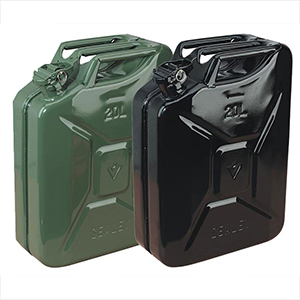 Both petrol and diesel generators can both provide electrical power for many applications. Performance is hard to compare with engines alone but the added factor of usage comes in handy. For backup generators performance is not as vital as the generator is not used on a daily basis. However for generators where soundsystems are concerned, where the generator usage can be continuous, performance can be compared. As benchmarked across the live sound industry, you will always get the same reply when posing the petrol vs diesel question - diesel power is king when it comes to live sound. However, it is still possible to run smaller sound-systems on petrol generators with the right operation and know how. Diesel generators will usually last longer than their petrol counterparts and are more fuel efficient. Diesel generators normally run at lower RPM and produce more torque at lower speeds thus increasing engine life and lowering noise. The fuel consumption per hour is also lower for the diesel model. Both generator fuel types produce dangerous exhaust fumes, including carbon monoxide, which can lead to serious injury or death. Both fuel types also need to be stored carefully, however petrol is more combustible and can be ignited by static electricity alone. Because of the relative stability of the fuel, the safety edge goes to diesel. When comparing overall cost of petrol and diesel generators, there are a lot of issues. The cost of a diesel generator can be as much as 3 times greater than a petrol generator. The next comparison is fuel cost. Diesel usually costs a little more than petrol (unless you have access to red diesel) but diesel generators consume less fuel than petrol generators, so for a generator that is in constant use the fuel savings with a diesel generator quickly add up and make the total cost of ownership better value than a petrol model.
Both petrol and diesel generators can both provide electrical power for many applications. Performance is hard to compare with engines alone but the added factor of usage comes in handy. For backup generators performance is not as vital as the generator is not used on a daily basis. However for generators where soundsystems are concerned, where the generator usage can be continuous, performance can be compared. As benchmarked across the live sound industry, you will always get the same reply when posing the petrol vs diesel question - diesel power is king when it comes to live sound. However, it is still possible to run smaller sound-systems on petrol generators with the right operation and know how. Diesel generators will usually last longer than their petrol counterparts and are more fuel efficient. Diesel generators normally run at lower RPM and produce more torque at lower speeds thus increasing engine life and lowering noise. The fuel consumption per hour is also lower for the diesel model. Both generator fuel types produce dangerous exhaust fumes, including carbon monoxide, which can lead to serious injury or death. Both fuel types also need to be stored carefully, however petrol is more combustible and can be ignited by static electricity alone. Because of the relative stability of the fuel, the safety edge goes to diesel. When comparing overall cost of petrol and diesel generators, there are a lot of issues. The cost of a diesel generator can be as much as 3 times greater than a petrol generator. The next comparison is fuel cost. Diesel usually costs a little more than petrol (unless you have access to red diesel) but diesel generators consume less fuel than petrol generators, so for a generator that is in constant use the fuel savings with a diesel generator quickly add up and make the total cost of ownership better value than a petrol model.
The use of RCD's/MCB's/Trip/Breaker devices within your power chain.
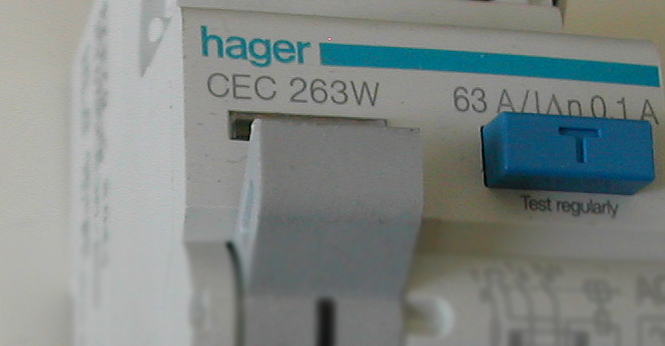 Electrical trip/breaker devices are almost always essential for protecting sensitive soundsystem equipment. These components safeguard costly sound gear against generator surges and/or voltage swings. They effectively 'kill' the power to your soundsystem in the space of milliseconds, to stop any voltage spikes/earthing faults permanently damaging your equipment. More to the point, they also protect you from serious injury/death. These safety devices can be found on your generators power panel, or on separate power distribution units. Types of trip devices/breakers:
Electrical trip/breaker devices are almost always essential for protecting sensitive soundsystem equipment. These components safeguard costly sound gear against generator surges and/or voltage swings. They effectively 'kill' the power to your soundsystem in the space of milliseconds, to stop any voltage spikes/earthing faults permanently damaging your equipment. More to the point, they also protect you from serious injury/death. These safety devices can be found on your generators power panel, or on separate power distribution units. Types of trip devices/breakers:
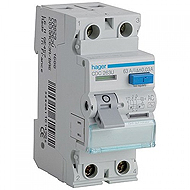 An RCD, or residual current device, is a life-saving device which is designed to prevent you from getting a fatal electric shock if you touch something live, such as a bare wire. It can also provide some protection against electrical fires.[/caption] [caption id="attachment_746" align="alignnone" width="190"]
An RCD, or residual current device, is a life-saving device which is designed to prevent you from getting a fatal electric shock if you touch something live, such as a bare wire. It can also provide some protection against electrical fires.[/caption] [caption id="attachment_746" align="alignnone" width="190"]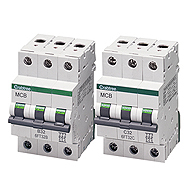 MCBs or Miniature Circuit Breakers are electromechanical devices which protect an electrical circuit from an over-current. The over-current, in an electrical circuit, may result from short circuit, overload or faulty design. An MCB is a better alternative to a Fuse since it does not require replacement once an overload is detected. Unlike fuses, an MCB can be easily reset and thus offers improved operational safety and greater convenience without incurring large operating costs.[/caption] [caption id="attachment_749" align="alignnone" width="190"]
MCBs or Miniature Circuit Breakers are electromechanical devices which protect an electrical circuit from an over-current. The over-current, in an electrical circuit, may result from short circuit, overload or faulty design. An MCB is a better alternative to a Fuse since it does not require replacement once an overload is detected. Unlike fuses, an MCB can be easily reset and thus offers improved operational safety and greater convenience without incurring large operating costs.[/caption] [caption id="attachment_749" align="alignnone" width="190"]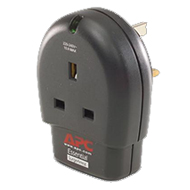 Domestic surge breakers. If you're running on a smaller generator for a smaller soundsystem, a surge protected extension lead will suffice. These do the same job as RCD's and MCB's but on a smaller load current.[/caption]
Domestic surge breakers. If you're running on a smaller generator for a smaller soundsystem, a surge protected extension lead will suffice. These do the same job as RCD's and MCB's but on a smaller load current.[/caption]How to keep your power feed stable for smaller soundsystems.
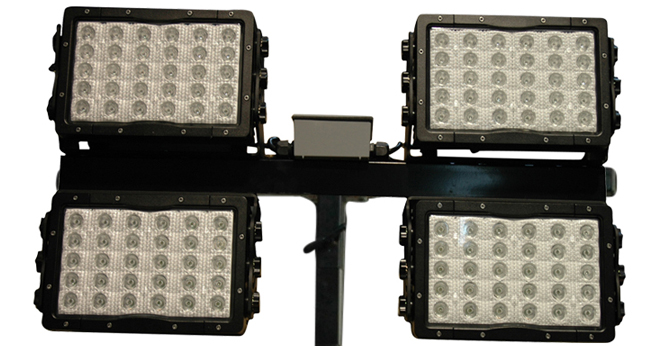 A great tip for if you don't have the luxury of a big generator with a voltage regulating feature (AVR), is to power a halogen site light from on the same generator that is supplying your soundsystem. This keeps your power output stable, which is vital when powering sensitive items such as amplifiers and processing units. What's more, you could even use LED 'par can' disco lighting instead of a site light for the same results.
A great tip for if you don't have the luxury of a big generator with a voltage regulating feature (AVR), is to power a halogen site light from on the same generator that is supplying your soundsystem. This keeps your power output stable, which is vital when powering sensitive items such as amplifiers and processing units. What's more, you could even use LED 'par can' disco lighting instead of a site light for the same results.
Monitoring your power supply from the generator.
 It's really important to keep an eye on your voltage and ampere supply when powering a soundsystem, as voltage swings or current drops from the generator can cause damage to your equipment. Where there is not a voltage and ampere read out display available, you can always apply one in the power chain to monitor your electrical supply. There are some great third party V&A monitors available out there, and some are even built into power distribution units, specifically for that purpose.
It's really important to keep an eye on your voltage and ampere supply when powering a soundsystem, as voltage swings or current drops from the generator can cause damage to your equipment. Where there is not a voltage and ampere read out display available, you can always apply one in the power chain to monitor your electrical supply. There are some great third party V&A monitors available out there, and some are even built into power distribution units, specifically for that purpose.
Never run two or more generators at once.
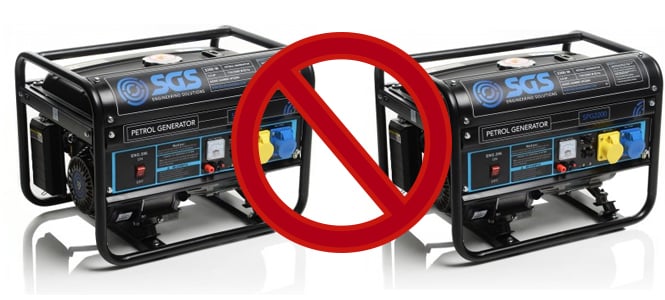 It's a hard enough task running a generator on it's own, so imagine what it's like running two or more at once- now also imagine what electromechanical stress that would put on the two or more generators; one would be 'pulling' and the other would be 'pushing', for example two 5kva generators on one circuit in the event of a voltage swing- one would effectively burn out at 7.5kva output, and the other would under load and possibly cut out at 2.5kva- this in turn would also spell disaster for any connected sound equipment. When you connect two generators onto the same circuit, you are also putting yourself at the risk of electrocution, as any RCD's and MCB's will effectively be underrated by the excess current; and will effectively cease to protect you. This is called 'cross phasing'. Always use just one generator at a time.
It's a hard enough task running a generator on it's own, so imagine what it's like running two or more at once- now also imagine what electromechanical stress that would put on the two or more generators; one would be 'pulling' and the other would be 'pushing', for example two 5kva generators on one circuit in the event of a voltage swing- one would effectively burn out at 7.5kva output, and the other would under load and possibly cut out at 2.5kva- this in turn would also spell disaster for any connected sound equipment. When you connect two generators onto the same circuit, you are also putting yourself at the risk of electrocution, as any RCD's and MCB's will effectively be underrated by the excess current; and will effectively cease to protect you. This is called 'cross phasing'. Always use just one generator at a time.
The world of power distribution units, or more affectionately known as 'distro's...
 Power distribution units or 'distro's are a great solution to powering soundsystems and protecting them. Some even have voltage and ampere monitoring panels on them too, and some have RCD's and MCB's on them to protect soundsystem operators and soundsystems alike from dangerous electrical currents from a generator. Click here to see what a typical power distribution unit looks like- (opens in new window). Distro's are a great 'all in one' unit to power from a generator using the correct cable, with the ability of surge protection from the generator, and to adapt from one type of power supply to another- i.e 32a to 16a to 13a. There are also external distro's available such as the brilliant Rubber Box distros- these are distros that don't go in an amp rack, but go as a stand alone unit in your power chain.
Power distribution units or 'distro's are a great solution to powering soundsystems and protecting them. Some even have voltage and ampere monitoring panels on them too, and some have RCD's and MCB's on them to protect soundsystem operators and soundsystems alike from dangerous electrical currents from a generator. Click here to see what a typical power distribution unit looks like- (opens in new window). Distro's are a great 'all in one' unit to power from a generator using the correct cable, with the ability of surge protection from the generator, and to adapt from one type of power supply to another- i.e 32a to 16a to 13a. There are also external distro's available such as the brilliant Rubber Box distros- these are distros that don't go in an amp rack, but go as a stand alone unit in your power chain.
The difference between 'single phase' and 'three phase'
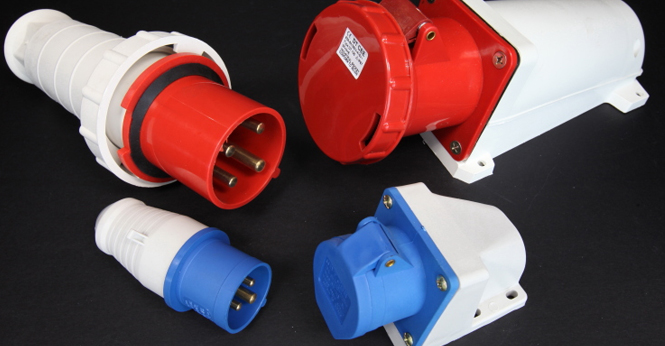 Some generators may supply 'one phase' output or 'three phase' output. Putting it simply, a single phase voltage supply is a single supply source. When the load is switched on such as a light or machine, a current will flow, hence providing a single phase current. A three phase voltage source is a supply source that supplies three live voltage lines. Some machines/equipment require a three phase voltage source, and when switched on, a current will flow in each line - hence a three phase current source. Electrical companies that produce electricity produce it in sine wave form. For a three phase source, the three waves are displaced by 120° from one another. The word phase normally refers to the voltage. For a single phase voltage source, there is 230V (depending on country) difference between the neutral and phase. For a three phase supply there is 230V difference between the neutral and phase, and just 400V between any two phases for a balanced system. This isn't really much to worry about when powering a soundsystem, however if say a 32a 3ph (three phase) output is your only output from your generator, and you want to just use 32a 1ph (single phase), you can just use an extension cable that has a 32a 3ph 'Ceeform' plug/socket on one end, and a 32a 1ph 'Ceeform' plug/socket on the other. The way the terminal pins inside the Ceeform ends work out will mean you would have effectively gone from three phase to one phase.
Some generators may supply 'one phase' output or 'three phase' output. Putting it simply, a single phase voltage supply is a single supply source. When the load is switched on such as a light or machine, a current will flow, hence providing a single phase current. A three phase voltage source is a supply source that supplies three live voltage lines. Some machines/equipment require a three phase voltage source, and when switched on, a current will flow in each line - hence a three phase current source. Electrical companies that produce electricity produce it in sine wave form. For a three phase source, the three waves are displaced by 120° from one another. The word phase normally refers to the voltage. For a single phase voltage source, there is 230V (depending on country) difference between the neutral and phase. For a three phase supply there is 230V difference between the neutral and phase, and just 400V between any two phases for a balanced system. This isn't really much to worry about when powering a soundsystem, however if say a 32a 3ph (three phase) output is your only output from your generator, and you want to just use 32a 1ph (single phase), you can just use an extension cable that has a 32a 3ph 'Ceeform' plug/socket on one end, and a 32a 1ph 'Ceeform' plug/socket on the other. The way the terminal pins inside the Ceeform ends work out will mean you would have effectively gone from three phase to one phase.
Generator headroom
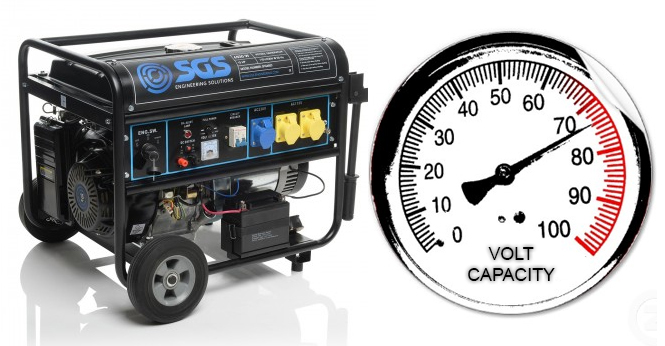 Headroom is a term used in power where it is surplus power for your needs. For example, if your soundsystem's power requirements is converted into kva, it's not a good idea to just match that with a generator- it would mean your generator would be working at 90-100% capacity. It's always a good idea to over specify a generator and go 1.5 - 2 times over what is required. This means your generator isn't working as hard, and keeps the supply stable and reduces any potential problems such as voltage swings or generator cut outs.
Headroom is a term used in power where it is surplus power for your needs. For example, if your soundsystem's power requirements is converted into kva, it's not a good idea to just match that with a generator- it would mean your generator would be working at 90-100% capacity. It's always a good idea to over specify a generator and go 1.5 - 2 times over what is required. This means your generator isn't working as hard, and keeps the supply stable and reduces any potential problems such as voltage swings or generator cut outs.
Choosing the right power cable
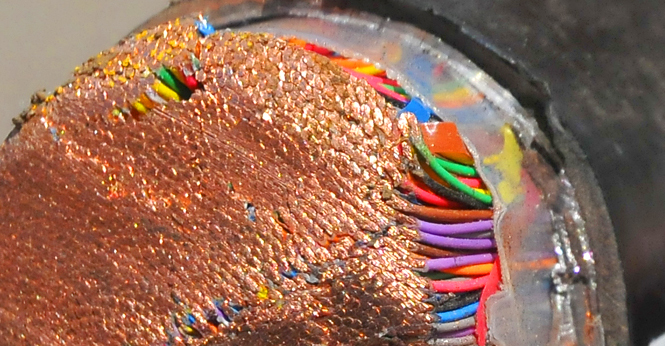 It's always important to choose the right power cable to run from your generator to your rack powering your soundsystem. Things to consider include:
It's always important to choose the right power cable to run from your generator to your rack powering your soundsystem. Things to consider include:
- Keeping your power cable between your generator and soundsystem as short as possible in length.
- Using as thick as cable as possible. 2.5mm or thicker for 10 metre or under lengths, 4-6mm or thicker for over ten metre lengths between the generator and soundsystem rack. This will prevent voltage drop-outs, which would in turn cause voltage swings.
- Correct cable sheath: If you're going to be providing a soundsystem in a muddy field, it's important to get the right power cable protection. 'HO7' grade appears to be the standard that can take the abuse from mud and fields.
- Correct cable ends. Always use correct cee-form ends, if it's a 16a to 16a cable run, make sure the ceeform plug/socket are 16a too.
Earthing a generator
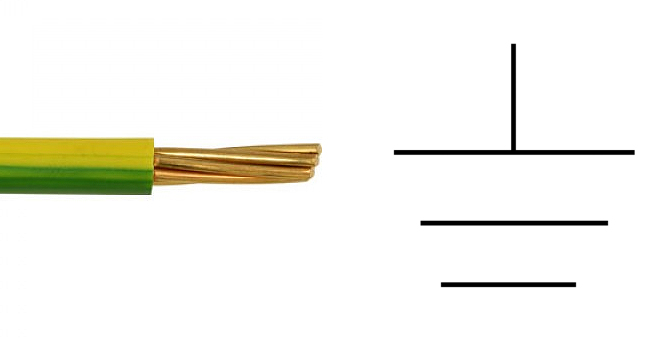 If you are using a 10kva or lower generator, earthing a generator for your soundsystem is not really an issue you have to worry about- most generators of this size use the metal frame surround to earth itself. However, if you manage to get hold of a 10kva or above generator it's always important to use an earthing rod. Earthing rods are used to correctly ground a generator set and the huge output they supply. Earthing rods should go at least four feet into the ground. You may have to use a sledge hammer to smash one into the ground. If using a generator over a few days, water the ground periodically where the earthing rod is in the ground. If you use rack distros or stand alone distros, they may have a handy LED indicator to indicate that the earthing of the power supply is fine. For example, the 16a EMO C601 has one of these. Don't be like the amateur that did this- click here.
If you are using a 10kva or lower generator, earthing a generator for your soundsystem is not really an issue you have to worry about- most generators of this size use the metal frame surround to earth itself. However, if you manage to get hold of a 10kva or above generator it's always important to use an earthing rod. Earthing rods are used to correctly ground a generator set and the huge output they supply. Earthing rods should go at least four feet into the ground. You may have to use a sledge hammer to smash one into the ground. If using a generator over a few days, water the ground periodically where the earthing rod is in the ground. If you use rack distros or stand alone distros, they may have a handy LED indicator to indicate that the earthing of the power supply is fine. For example, the 16a EMO C601 has one of these. Don't be like the amateur that did this- click here.
Powering up your soundsystem once the generator is on
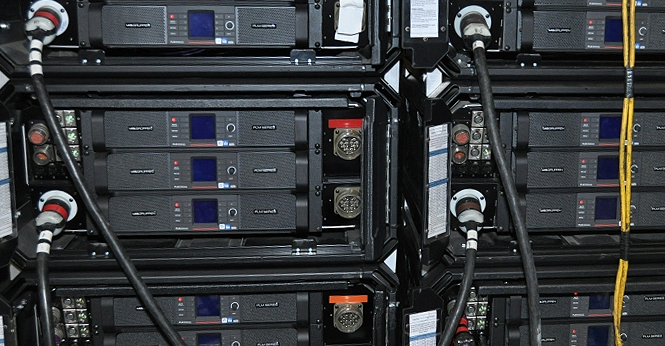 Once all your generator supply is sorted, its time to power up your soundsystem. One thing you will need to do is power it up slowly. Do not go and power up your whole amp rack at once, as power amplifiers use a huge power draw when turning on. As a rule of thumb, always power up the bigger amplifiers first, and leave 30 seconds or so between each amplifier turning on. For example, turn on bass duty amplifiers first, then 'mid top' duty amplifiers, then processing units. This allows your generator to be broken in slowly, and as stated before, run some LED lighting or a site light to make sure the generator isn't idling down to 0% i.e when bands or DJ's go quiet during their sets.
Once all your generator supply is sorted, its time to power up your soundsystem. One thing you will need to do is power it up slowly. Do not go and power up your whole amp rack at once, as power amplifiers use a huge power draw when turning on. As a rule of thumb, always power up the bigger amplifiers first, and leave 30 seconds or so between each amplifier turning on. For example, turn on bass duty amplifiers first, then 'mid top' duty amplifiers, then processing units. This allows your generator to be broken in slowly, and as stated before, run some LED lighting or a site light to make sure the generator isn't idling down to 0% i.e when bands or DJ's go quiet during their sets.
Get a second opinion
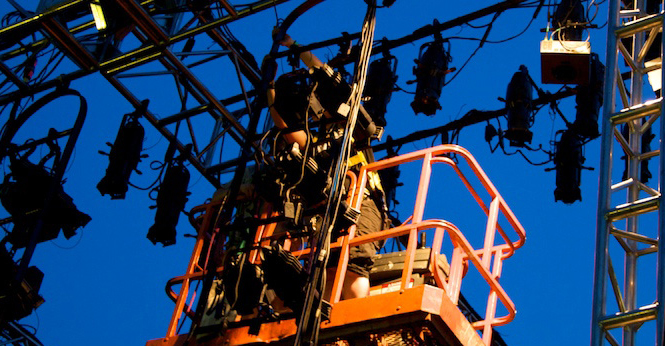 Unless you're very experienced at event electrical supply, it's always an absolute necessity to get a qualified electrician to check over your final set-up. If you're doing a major event such as a music festival, this will be required by law by local authorities. This keeps you as a soundsystem operator safe, and all those using it. If you're doing a smaller event, get a friend who's an electrician to do some basic checks before you proceed. They may use multimeters and cable testing equipment to make sure everything is safe to use. It's also worth knowing too, that many event organizers will require you to get all of your equipment PAT tested before use. PAT testing ensures your equipment is safe to use, and is reasonably priced- some electricians will do it for as little as 50p per electrical item/cable. They will also issue you with a PAT test certificate which lasts for 12 months.
Unless you're very experienced at event electrical supply, it's always an absolute necessity to get a qualified electrician to check over your final set-up. If you're doing a major event such as a music festival, this will be required by law by local authorities. This keeps you as a soundsystem operator safe, and all those using it. If you're doing a smaller event, get a friend who's an electrician to do some basic checks before you proceed. They may use multimeters and cable testing equipment to make sure everything is safe to use. It's also worth knowing too, that many event organizers will require you to get all of your equipment PAT tested before use. PAT testing ensures your equipment is safe to use, and is reasonably priced- some electricians will do it for as little as 50p per electrical item/cable. They will also issue you with a PAT test certificate which lasts for 12 months. 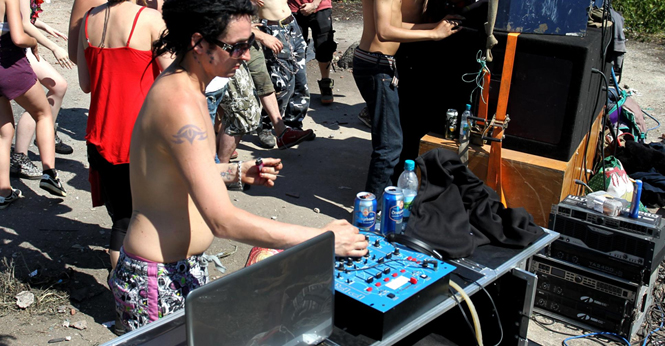


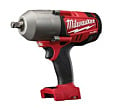
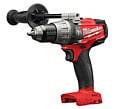
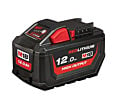
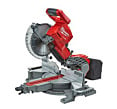

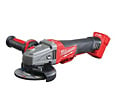
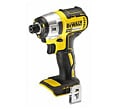
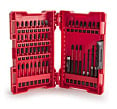

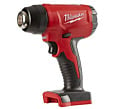
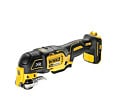
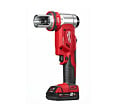
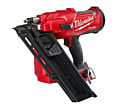
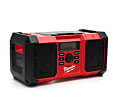



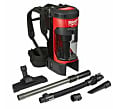

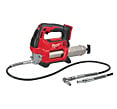
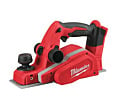
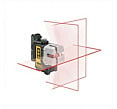
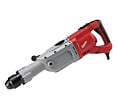
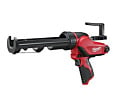
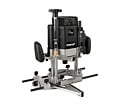
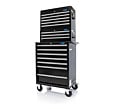
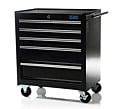
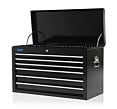
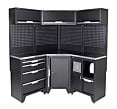
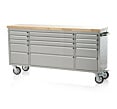
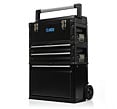
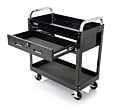
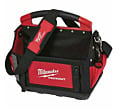
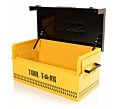
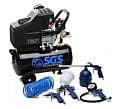
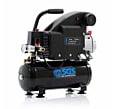
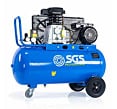
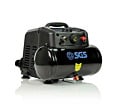
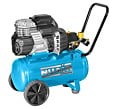
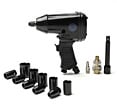
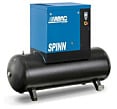
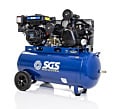

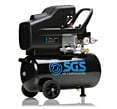
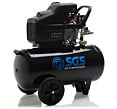
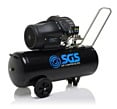
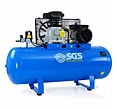
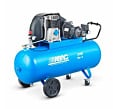
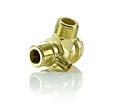
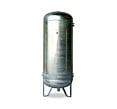
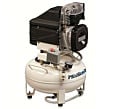
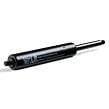
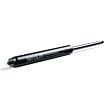
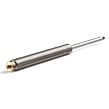
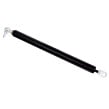

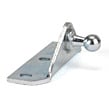

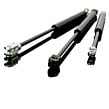
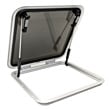
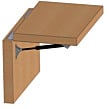
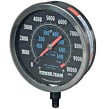
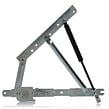
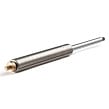
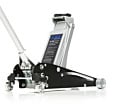
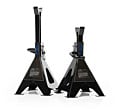
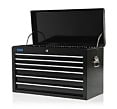
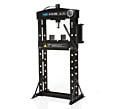
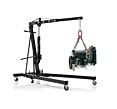
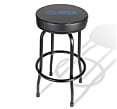
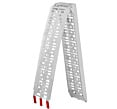
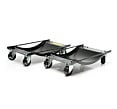
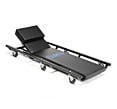
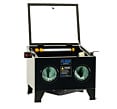
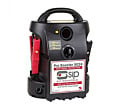
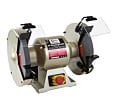
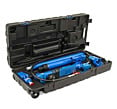
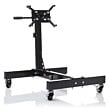
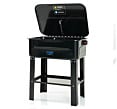
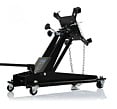
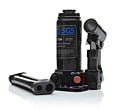
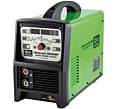
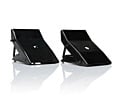
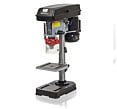
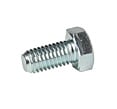
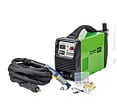
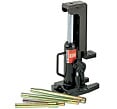
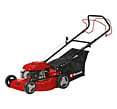
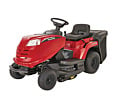
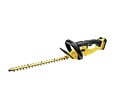
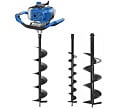

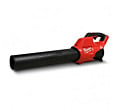
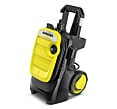
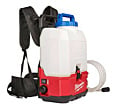


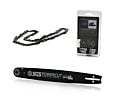
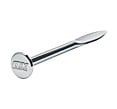
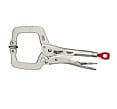
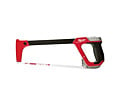
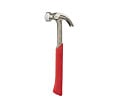
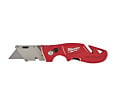
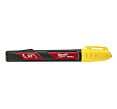
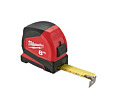

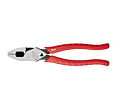
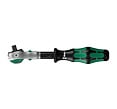
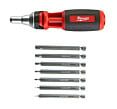
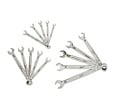
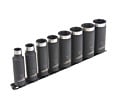
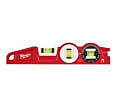
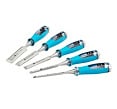
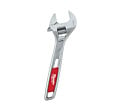


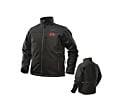
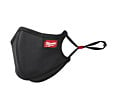
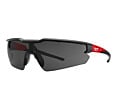
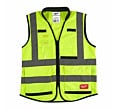

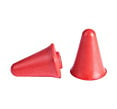

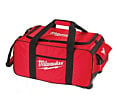
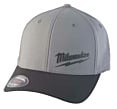
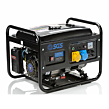
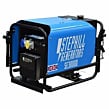
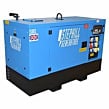
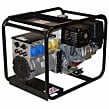
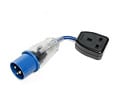
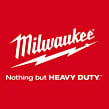

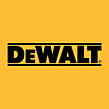


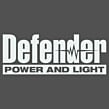



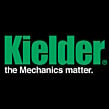













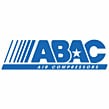






 Milwaukee Authorised Distributor
Milwaukee Authorised Distributor  4.4 out of 5 with 50,000+ reviews
4.4 out of 5 with 50,000+ reviews  Free delivery on orders over £75*
Free delivery on orders over £75*  Next working day delivery available*
Next working day delivery available* 
